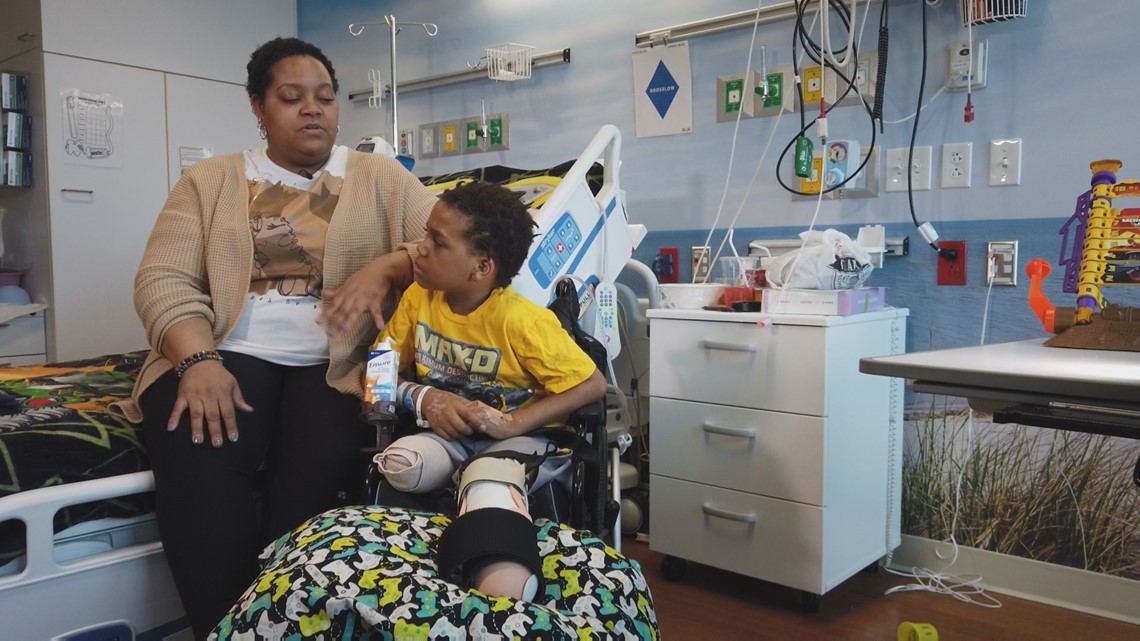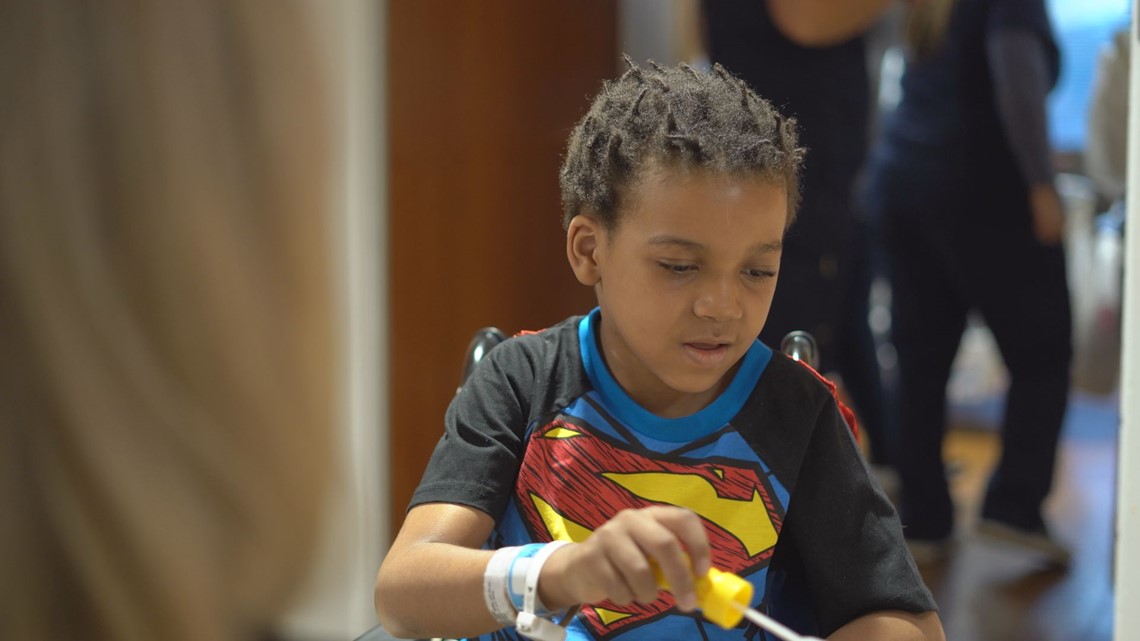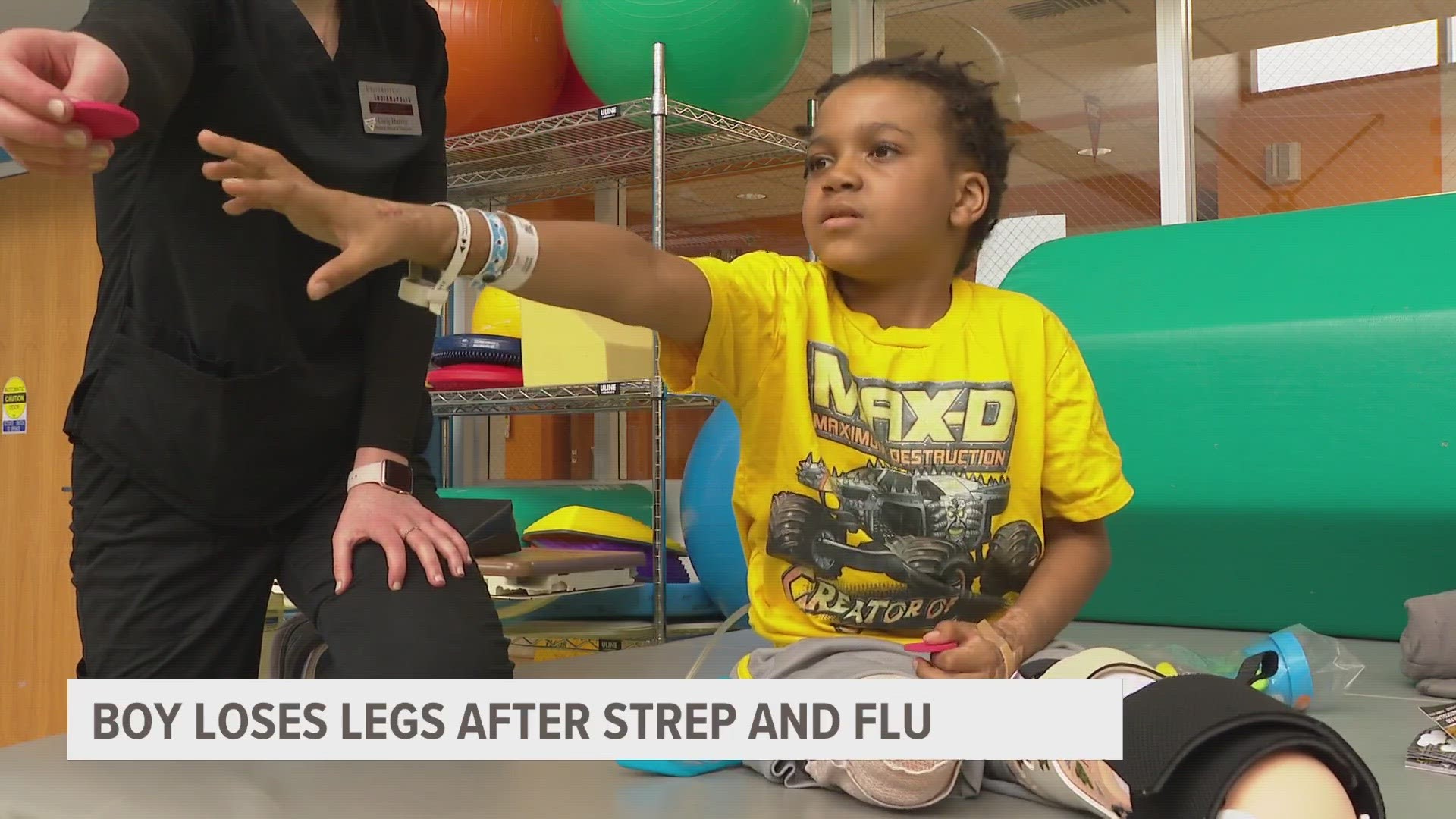GRAND RAPIDS, Mich. — In December, Kaden Stevenson became sick. His mom, Michele, said he slept in through Christmas morning.
"By Tuesday, the pain in his leg was so bad, my mom called me at work and said he can't get out of the bed," said Stevenson.
Stevenson started to take him to urgent care, but said, "something just wasn't right to me."
His leg then became swollen and he had a rash all over his body. Stevenson re-routed to the Hurley Medical Center in Flint.
"The ER doctor sat me down," said Stevenson, "And was like, your son is really sick."


He was taken in a helicopter to Helen DeVos Children's Hospital. There, they learned Kaden had influenza A and strep. The bacteria got into his blood stream and he was in toxic shock.
"His heart was failing, his liver was failing, his kidneys were failing," said Stevenson. "My baby was dying. I didn't know. I didn't know."
Kaden spent nearly two weeks in the pediatric intensive care unit. Later, he had both of his legs amputated from the infection.
"So, the right leg is above the knee, and the left leg is below the knee," said Stevenson.
Kaden has spent weeks in Mary Free Bed Rehabilitation. Wednesday, he graduated with applause from staff and patients, wearing a superhero cape. His mom calls him "Kaden Blaze."


"I've been calling him a superhero, because he is mine," said Stevenson, "I think about Blaze, everything that he does, he just tries so hard and never gives up. And then, even with learning how to do the wheelchair, he just takes off."
Stevenson is glad she listened to her mother's intuition in December, and took Kaden to the emergency room.
"When I think back to if I had done anything differently than what I had done," said Stevenson. "My son might not be here. If I had waited one more day, one more hour, he might not be here."
Amputations stemming from infections like influenza or strep are rare, but do happen. George Fogg, a pediatric infectious disease physician with Helen DeVos Children's Hospital, says they get only about one serious blood infection like that in a typical year.
"It's been long known that there is an association with kind of invasive group A strep infections that follow either influenza or chickenpox infections," said Fogg.
"It's thought for the chickenpox, you have these poxes on your skin that cause open wounds. Then, so, the strep, there is group A strep on people's skin and it can get in that way... But when you get the influenza infection, it could sort of disrupt some of the mucous membranes back there, allowing the bacteria to then get into the bloodstream. And then once it gets into the bloodstream, it can sort of sometimes seed various tissues, and then cause a very severe infection, kind of like in Kaden's case."
Fogg said while there will be many sore throats in a child's life, there are some extra symptoms to be on the lookout for. A child could be developing a more serious infection if they have a very high fever, less aware and awake, and complaining of pain in one area of their body.
You can follow along with Kaden's journey through his Kaden Blaze Facebook page. Friends and family also set up a GoFundMe page to help with medical expenses.
RELATED VIDEO: MI Department of Health and Human Services investigating 3 pediatric deaths linked to iGAS
►Make it easy to keep up to date with more stories like this. Download the 13 ON YOUR SIDE app now.
Have a news tip? Email news@13onyourside.com, visit our Facebook page or Twitter. Subscribe to our YouTube channel.

